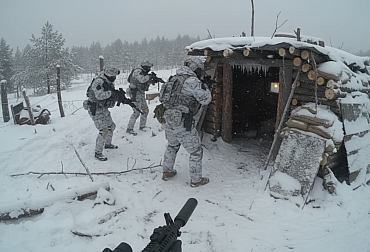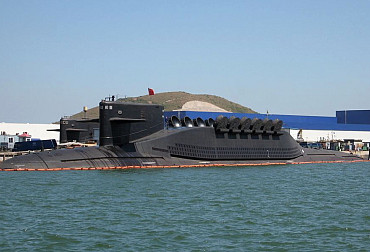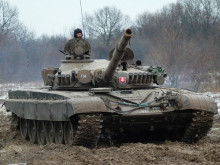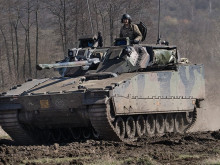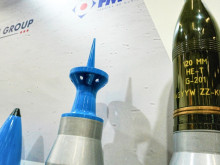Europeanisation of the F-35
Given the ever-increasing number of European states that have decided to switch to the fifth-generation F-35, it is appropriate to consider the possible "Europeanisation" of this aircraft, i.e. moving as much of the production to Europe as possible and integrating European weapons.
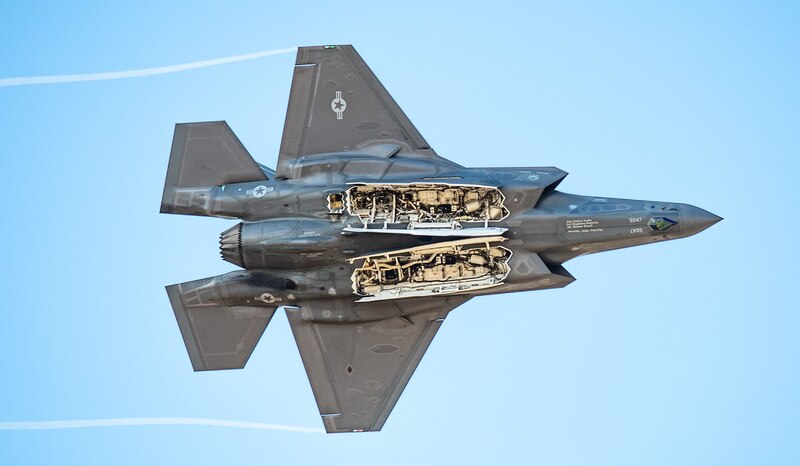 Picture: F-35A with open bomb bay | U.S. Air Force / Senior Airman Alexander Cook
Picture: F-35A with open bomb bay | U.S. Air Force / Senior Airman Alexander Cook
The F-35's manufacturer, Lockheed Martin, states that currently around 25% of the F-35's components are manufactured in Europe. The European countries with the largest share of the F-35 programme are Denmark, Italy, Germany, Norway and the UK. The Danish company Terma, for example, is developing a multi-purpose container which, although located on the outside of the aircraft, does not significantly increase the aircraft's reflectivity. This container can be used for a wide range of sensors and systems, including weapon systems. The wings are then manufactured in Italy and Italian companies also supply, for example, cockpit parts and other components of the aircraft. In addition, a maintenance and repair centre for aircraft from other European countries is being prepared at Cameri air base. Germany's Rheinmetall, for its part, will be involved in the production of F-35 fuselage parts to be supplied to foreign customers. Norway's Kongsberg is participating in the development of a Joint Strike Missile (JSM) specifically for the F-35. Other Norwegian companies are supplying, for example, pylons to house air-to-air missiles. However, probably the most important European contributor in terms of industrial cooperation is the UK. British companies are involved in the supply of seats and horizontal tail surfaces, for example. In total, more than 100 British companies are involved in deliveries for the F-35.
In terms of weapon systems, the European missile manufacturer MBDA is preparing the integration of ASRAAM (short-range) and Meteor (long-range) air-to-air missiles. As for the aforementioned air-to-surface Joint Strike Missile, these are designed to destroy land and sea targets at long range. The biggest advantage of these missiles is the fact that they are fired from the aircraft's internal bomb bay and do not have to be located under the wings, allowing the aircraft to maintain a low bouncing surface. A special case is the TAURUS KEPD 350 cruise missile, which, according to one of MBDA's promotional materials, may be integrated into the F-35's armament.
It is clear from the above information that European companies are making a significant contribution to the production and armament of the F-35. Given the dynamic development of the security situation both in Europe and, in particular, in the Western Pacific and the increasing number of F-35 aircraft in the armament of European states, it is therefore appropriate to consider the possibility of further increasing the share of F-35 production and integrating as much armament as possible.
The first, and probably most obvious, advantage is that by increasing the F-35 production share and the possibility of producing spare parts for the aircraft, the potential dependence on the US side will be significantly reduced. It should be stressed, however, that this advantage in no way implies a need to reduce cooperation with the US side, which will remain crucial. However, European countries are very aware of the current geopolitical reality, in which American attention is shifting, particularly to the Western Pacific.
A similar situation exists in the area of weapons systems. If European missiles are integrated, it will be possible to reduce even further the dependence on the US side, which will be able to concentrate its industrial capabilities on its own armed forces. In addition, the problem of the possible transport of these missiles from the United States, which would take a long time compared with the possibility of production and transport within Europe, will be eliminated.
A third and rather strategic and long-term advantage is also the possibility of continuing to develop the European aerospace industry, which unfortunately does not currently have a fully-fledged, airworthy and combat-capable fifth-generation aircraft. Participation in the development and production of components for the F-35 would provide the European industry with the opportunity to further develop and possibly bridge the period in which a fifth or even sixth generation European aircraft is not available (for comparison: in the United States, according to the Defense News website, the first flight of a prototype of a sixth generation aircraft already took place three years ago).
It is clear that the F-35 will become the backbone of the European air forces in the short term, and European states should therefore already be considering how to use this to their advantage in today's dynamically changing security environment, so that they can continue to ensure superiority and dominance in a key air domain.












